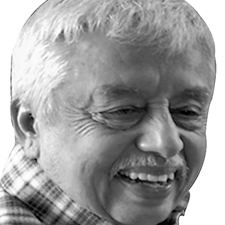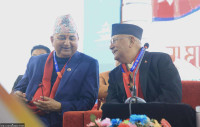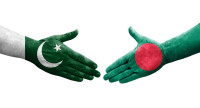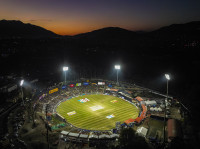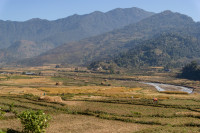Opinion
KC’s unending fight
Dr. Govinda KC’s fourteenth hunger strike ended with the signing of yet another agreement between him and the Government of Nepal (GoN).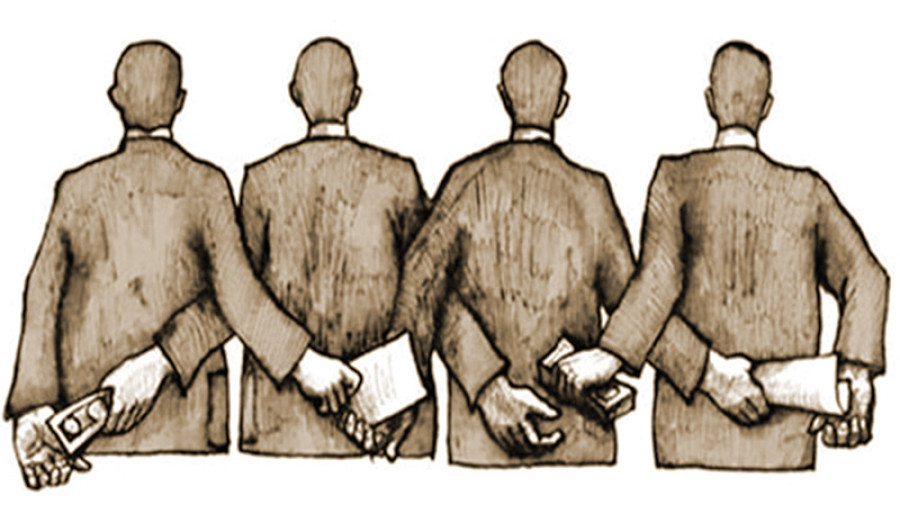
Naresh Koirala
Dr. Govinda KC’s fourteenth hunger strike ended with the signing of yet another agreement between him and the Government of Nepal (GoN). About a week before the signing, thousands of citizens flooded Kathmandu’s crowded, smog-choked streets in support of KC’s anti-corruption crusade and to denounce the Chief Justice, Gopal Parajuli, for hauling KC before the Supreme Court to answer charges of contempt of the court.
At the time of his arrest, KC was on hunger strike to protest Parajuli’s alleged complicity in corruption and demanding his resignation. Following his release from police custody, the Supreme Court formed a committee to investigate Parajuli’s birth certificate, which his critics argue is forged. The court had used his birth certificate as the prima facie evidence of his seniority, and the seniority as a basis of his appointment. That seniority is now in question.
A larger circle
Five years ago, when KC started his anti-corruption campaign, the judiciary was not in his cross hairs. His demands at the time were simple: regulate medical education and control excessive tuition fees. He was concerned that Nepal’s private medical colleges, which have turned into money making machines for their owners, were turning out unqualified doctors who presented a real risk to the nation’s health care.
In any functioning democracy, KC’s demands would have harboured minimal controversy; however, in Nepal, the vested interests in cahoots with politicians made it an ideological issue. It took KC thirteen hunger strikes and strong civil society support, including that of doctors, to force the government to promulgate an ordinance to regulate medical education and set educational standards.
The public discourse that KC’s hunger strikes generated exposed the complicity of the judiciary and many politicians. It became apparent that unless the judiciary was cleansed, no amount of regulation would ensure quality medical education. Even some tepid attempts by existing regulatory agencies to enforce standards were thwarted by the judiciary who repeatedly judged in favour of the egregious colleges.
In September 29, 2017, Setopati, a popular online news site, published an investigative report based on secretly taped conversations with the chief administrator of a medical college. The report is an expose’ of the principal actors who enable the “medical mafia” and the process by which they work. Politicians, bureaucrats, universities, the medical council and the judiciary are all involved.
In January 9, 2018 the same daily published a record of Parajuli’s decisions on cases of medical malpractices before he became Chief Justice. In every case, Parajuli had sided with the colleges and endorsed their perfidy. As Chief Justice, Parajuli reinstated the discredited and previously sacked Dean of the Institute of Medicine; his way of diminishing KC.
This is what provoked KC’s fourteenth strike targeting the judiciary. But his battle seems to have just begun.
Threat of regression
KP Oli, of the United Marxist Leninist (UML), who may be Nepal’s next Prime Minister, is strongly opposed to restraining medical colleges because it will undercut the profits from his associates’ medical college business. The UML obstructed the passage of the Medical Education Bill in parliament. The Bill was, however, promulgated as an ordinance.
“A government employee (KC) stages a fast-unto-death. The government holds talks with him and issues an ordinance as per its convenience, barring anyone from establishing a medical college for 10 years,” fumed Oli.
The ordinance does not stop the establishment of colleges compliant with it outside Kathmandu. It only puts a moratorium on opening new colleges in Kathmandu for a period of 10 years, thus forcing entrepreneurs to bring health services within the reach of the rural poor. Oli’s comment is misleading and disingenuous.
Rajendra Pandey, Oli’s front man in obstructing the Bill and the proponent of a new medical college in Kathmandu, has openly vowed to let the ordinance die when his party forms the government.
The UML and indeed the Chief Justice do not seem to recognise that the tinder box of the Nepali people’s anti-corruption anger could explode any time and attempts to defuse it through political trickery or legalistic mumbo-jumbo will only exacerbate it. Routine police high handedness of a street hawker in Tunisia triggered the “Arab Spring”.
The following are a few recent specific examples of consumption of corrupt judiciary and politicians by the explosion of public anger.
In Ghana, between 2015 and 2016, the exposé of an investigative journalist, Anas Aremeyaw Anas, lead to the sacking of over 20 high court judges and magistrates. Anas’s working motto is: “name; shame; jail”.
In 2016, in Brazil, the world’s eighth largest economy, anti-corruption rallies brought hundreds of thousands protestors to the street and sent numerous powerful politicians to prison; forced the impeachment of one president and the resignation of another.
In 2017, in South Korea, the investigation of a huge influence peddling scandal called “Choi- gate”, ended with President Park Geun-hye’s impeachment.
In Israel, Prime Minister Netanyahu is currently in hot water. Israeli police are investigating Netanyahu’s alleged corrupt practices. Thousands of Israelis have attended rallies demanding Netanyahu’s resignation.
Corruption haunts the corrupt. It is dehumanising; destabilising; anti-democratic and an insult to the dignity of a nation and its people. Societal changes are not brought about by acquiesce to the corrupt. In a period of 35 years, Gandhi fasted 17 times before India became free. In five years, Dr KC has fasted 14 times and the end of his fight is still not in sight.
Who knew, fighting domestic evil would be harder than fighting colonists!
Koirala is a geotechnical engineer resident in Vancouver, Canada




 13.12°C Kathmandu
13.12°C Kathmandu